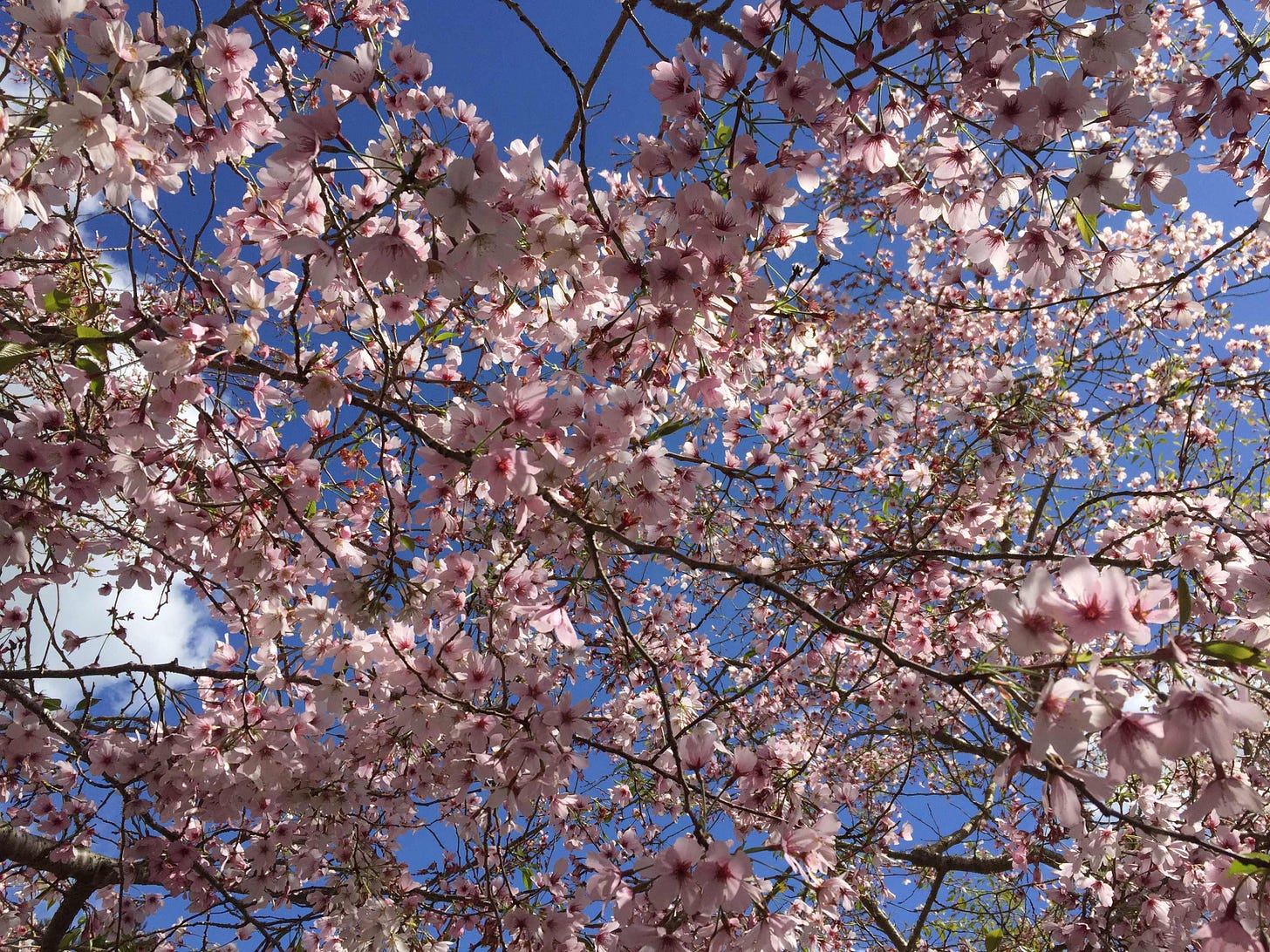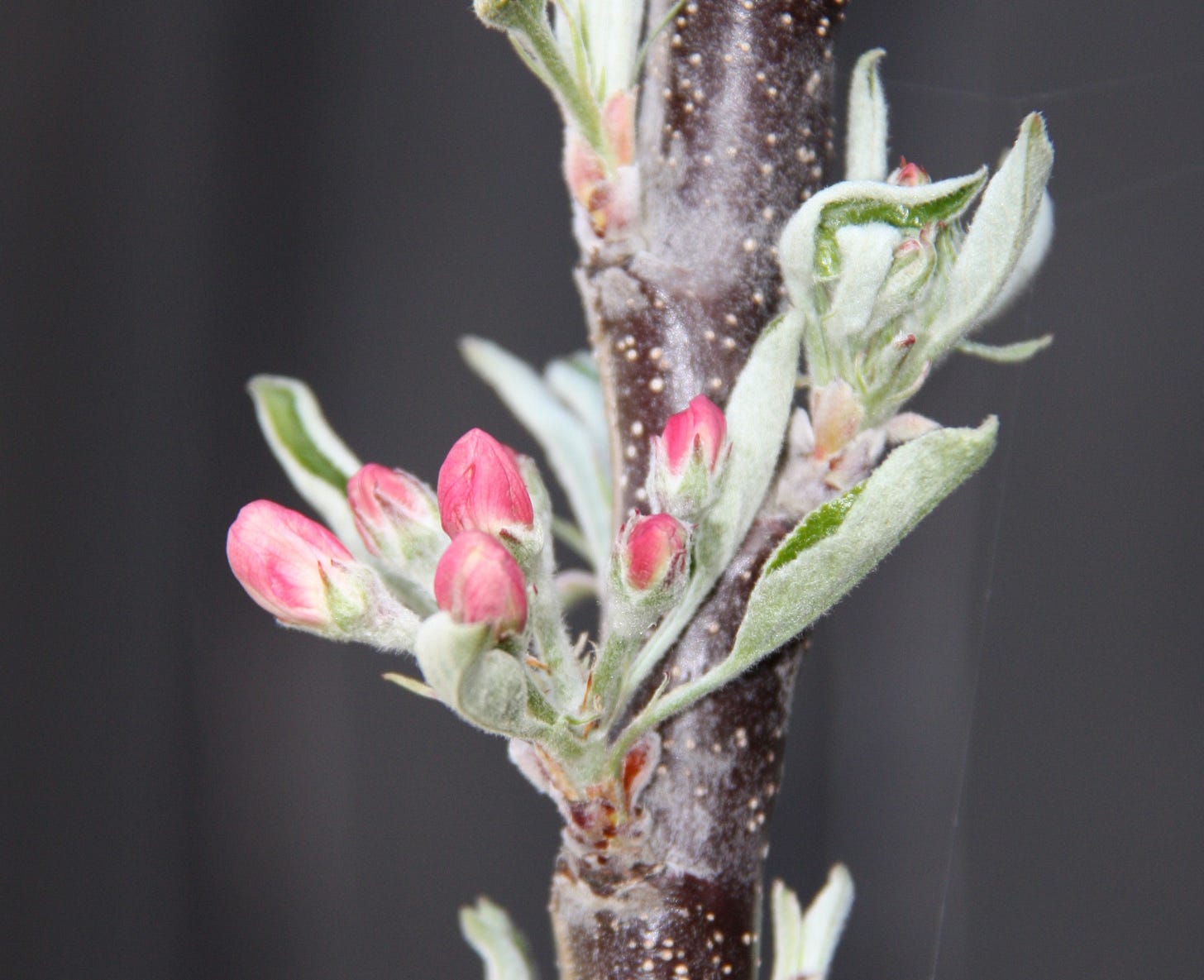Spring forward
An update on plans for the next few months (8 minute read)
It’s 6.30 pm on a Friday night, and I can still see colour in the sky. Although Wellington’s weather can’t decide which season it is – I was working at my desk with a blanket around my legs on Wednesday – the daylength hints at long, summer days to come. I usually work in the evening, so I’m not necessarily going to do anything with those long days, but I enjoy them nonetheless.
This week, I had planned to bring you an article on lithium batteries and how to use them safely. I discovered recently that my habit of charging my phone and laptop overnight in my bedroom is not a good idea. Lithium batteries are becoming increasingly important to us, and I realised that we needed to know more about their safe use. I spoke to a couple of people from Fire and Emergency New Zealand about what the risks are and how we can manage them, but the article isn’t quite ready.
So, since it’s spring and I’m anticipating the summer, I thought I would look ahead and share some of my plans for what I’ll be writing about over the next few months. It’s also an opportunity for you to let me know if there are topics you want to hear more about.

For my paying subscribers, I have nearly finished working my way through the list of islands I’ve visited in the course of my work. In a couple of weeks, I’ll be writing about Niue, which I visited 20 years ago in the wake of Cyclone Heta. After that, I have a few islands off the coast of New Zealand to write about, although I don’t have so many photos of them. Most of these visits were at a time when I wasn’t in the habit of carrying a camera with me. However, I still have some stories to share. And I did find a photograph of myself with a kākāpō sitting on my head, taken on Maud Island. So I can show that to you in a month or so. (I could also write about Ross Island in Antarctica again, since it's an island and I’ve been there for work. I love writing about Antarctica, so if you want to read more, let me know.)
When I’ve run out of islands, I was thinking of writing about some of the lesser-known places I’ve been in New Zealand. At the end of this article, there’s a preview of one of these places.
I haven’t forgotten about the Lake Erie documentary. I’ve been a bit behind in organising to share that with you, but that will be happening soon.
I also have plenty of free articles planned. I recently interviewed a researcher who studies food waste, so I’ll be bringing you that soon. It’s a really important topic, because reducing our food waste is one of the most important individual actions we can take to fight climate change. And it saves us money. Also related to climate change, I’m looking into a number of topics related to solutions. Through the interview I did about lithium battery safety, I also became interested in battery recycling and other things we need to do so that we live within the Earth’s limits, so I’ll be writing more on those subjects. I’m also planning to look at some of the common myths and misinformation on climate change which circulate in New Zealand. There is good overseas information, but I think something local would be useful.
On the subject of interviews, I interviewed Mike Joy for North and South magazine last month (it’s published in the August issue). I had a fascinating conversation with Mike and only a part of that ended up in the published article, so I’ll be sharing more of that interview at some point in the next few months. I have a number of other ideas for articles on water – a few months ago I met some amazing people who are really making a difference to how their communities view and care for water. These kinds of stories are important, because they bring real hope at a time when we need it. We don’t hear enough about people who are quietly doing wonderful things for their communities and the planet.
I also have one topic from Australia which I haven’t written up yet. While I was there, I interviewed a botanist who studies gum trees. Although the interview was about gum trees, we spoke about some of the genetic techniques which scientists use to understand the relationships between plants. So, I’m planning an article which introduces some of the concepts which help in understanding genetic technologies.
This brings me to the subject of risk. There are two technological developments which are on my mind at the moment – genetic modification and artificial intelligence. Both of these technologies are racing ahead of what most of us know about them. I know that they both have risks, but at this stage I don’t know much about what those risks are. Nor do think I have the knowledge to come to an informed option. What I do have, however, is lots of experience in understanding, assessing and explaining risks. So, I will be using that experience as I learn about genetic modification and artificial intelligence. I’ve been talking with experts already and I will be talking with more over the next few months. I’ll have a number of articles looking at both topics.
Beyond the end of this year, things are currently a little uncertain. The funding for the main work I’ve been doing has ended, which means I’ll need to rethink how I support myself. I’ve got a couple of smaller projects in the planning stages, so I’m not panicking just yet. I would also like to put more time into writing and helping people understand the science behind important issues.
I’d love to know which topics you’d like to hear more about. Do you want more about the science? Do you want to read more interviews with scientists? Do you want more nature writing and articles about New Zealand’s natural environment? Would you be interested if I did a few online field trips (over Zoom) to some of the weird and wonderful places I’ve been?
Finally, here’s a preview of an article about a remote spot on the South Island’s north-west coast.
The length of sand at Kahurangi Point is one of New Zealand’s most remote beaches. Facing the ceaseless wind on the most northerly stretch of the South Island’s west coast, it’s not the kind of place where you drop by for a quick swim. It isn’t even the kind of place you might plan to go for the day. I visited three times when I worked on invasive weeds in the Nelson region, because the land behind the beach had some unique native species, as well as some unique weed problems. Each time, I went for a week. It took a whole day to get there from Nelson and a whole day to get back.
To get there, I’d walk to the Nelson Department of Conservation office – I lived only minutes away – and pick up one of the vehicles before the sun was up. I’d stop at a service station, buying a steak-and-cheese pie and a takeaway coffee of questionable quality, consuming them as I drove to Tākaka. It wasn’t my usual breakfast, but it was perfect on that kind of day. At Tākaka, I’d meet up with some of the staff from the local Department of Conservation office. We’d drive north-west in a Toyota Hilux, almost to Farewell Spit, then turn south-west onto a gravel road. We’d skirt the Whanganui Inlet, probably the most unspoiled estuary in the country, with dense forest growing right to the edge of the sand. We’d pass the region’s largest remaining wetlands, through a valley of lush pasture, and then reach the wild coast.
By this time, I’d have been on the road for more than three hours, and wasn’t yet half-way to Kahurangi Point. There was at least another hour and a half driving on winding gravel roads, and five rivers to cross – only two of which had bridges – before we left the vehicle. Depending on how much equipment we had, we might carry it all on our backs, or we might unload a quad bike and trailer from the back of the Hilux.
And then we’d walk along the beach. It would take 3-4 hours, depending on whether our gear was on the quad bike trailer or on our backs. It was easy walking along the beach, but there was one deep and challenging river to cross. The tea-stained water was sometimes chest-deep, but it was placid and the riverbed was stable. More hazardous were the two streams which flowed across the sand. Sometimes the dark water concealed holes or sand so soft you could sink to your knees. There was one trip where we almost turned back on our way home, because of the state of one stream, but with bad weather on the way, we could have been trapped for a week. In the end, we were fine, but it was a reminder of how vulnerable we are in some of these remote areas.
By the time we arrived at the old cottage which had once housed lighthouse keepers and their families, we’d be thinking about making dinner on the old wood-burning range.
[to be continued…]





My answer to your question about what to write about is "all of the above". I love your inquiring mind and variety of topics. I'm delighted you met Mike Joy - he is a national treasure. And I'm glad you are investigating genetic techniques - very topical given that FSANZ is proposing to de-regulate gene editing techniques in food (which means we won't know what genetic modification techniques are present as they won't be labelled and the onus is on the food industry to do the safety testing!!). We are indeed lagging behind the speed of technological development, with all its risks and benefits and very little regulation in sight......
We found Stewart Island interesting, though we only spent a few days there some years ago. We were lucky enough to get on a boat trip to see albatrosses and also a night walk to see a Kiwi. You've probably been there and it would be interesting to hear your impressions.
Alan and Wendy Roedell, Seattle WA, USA.